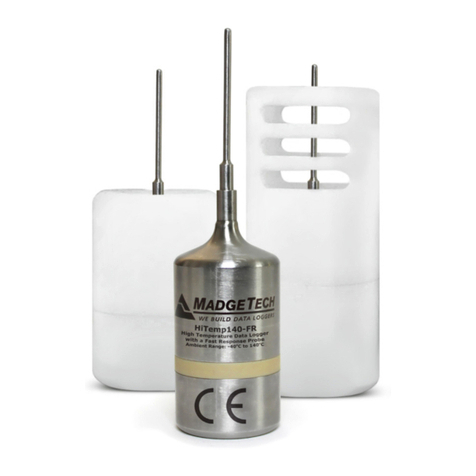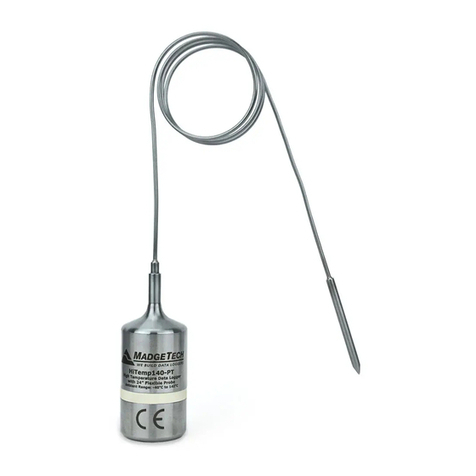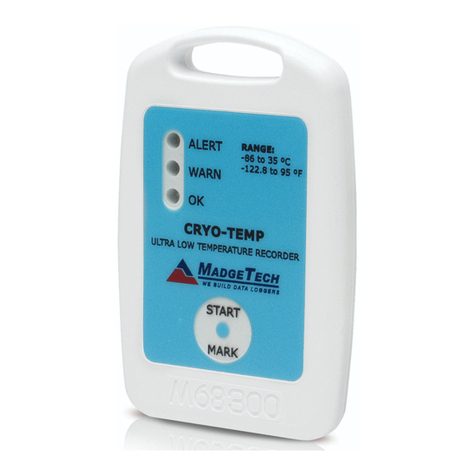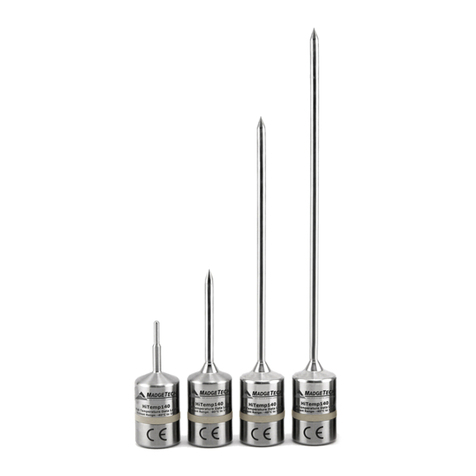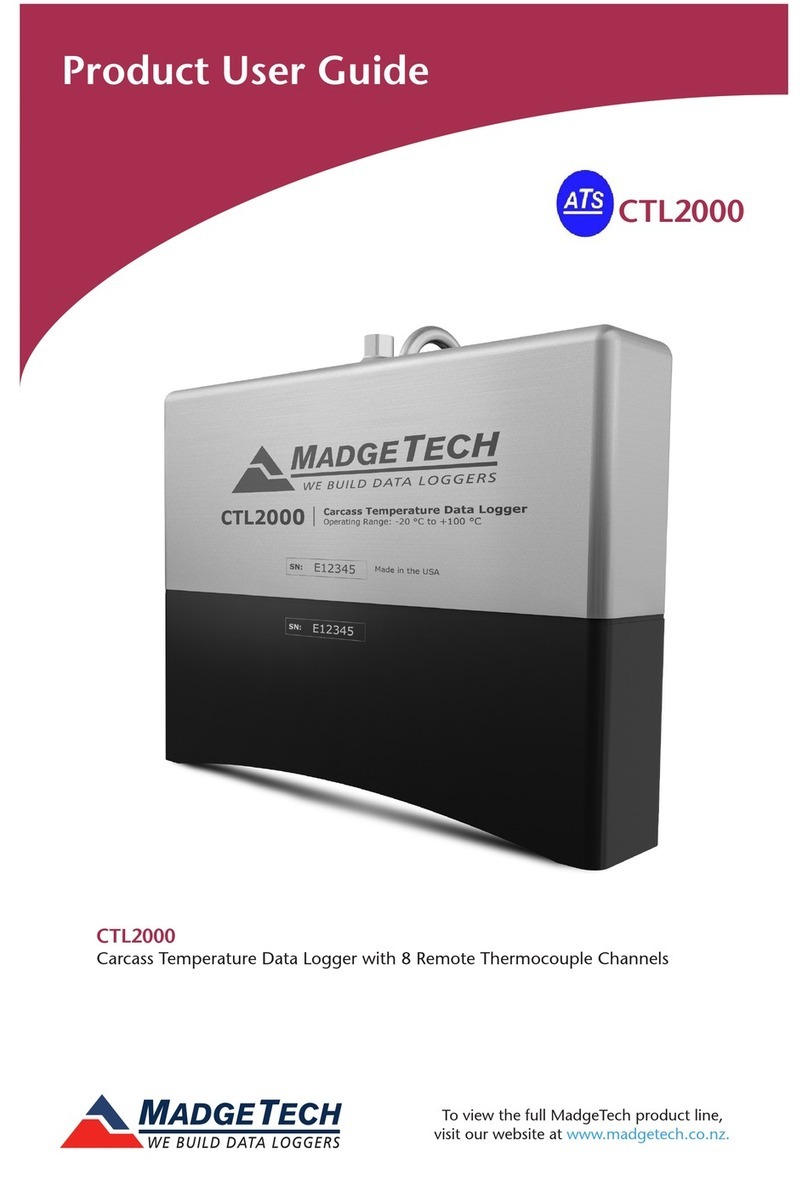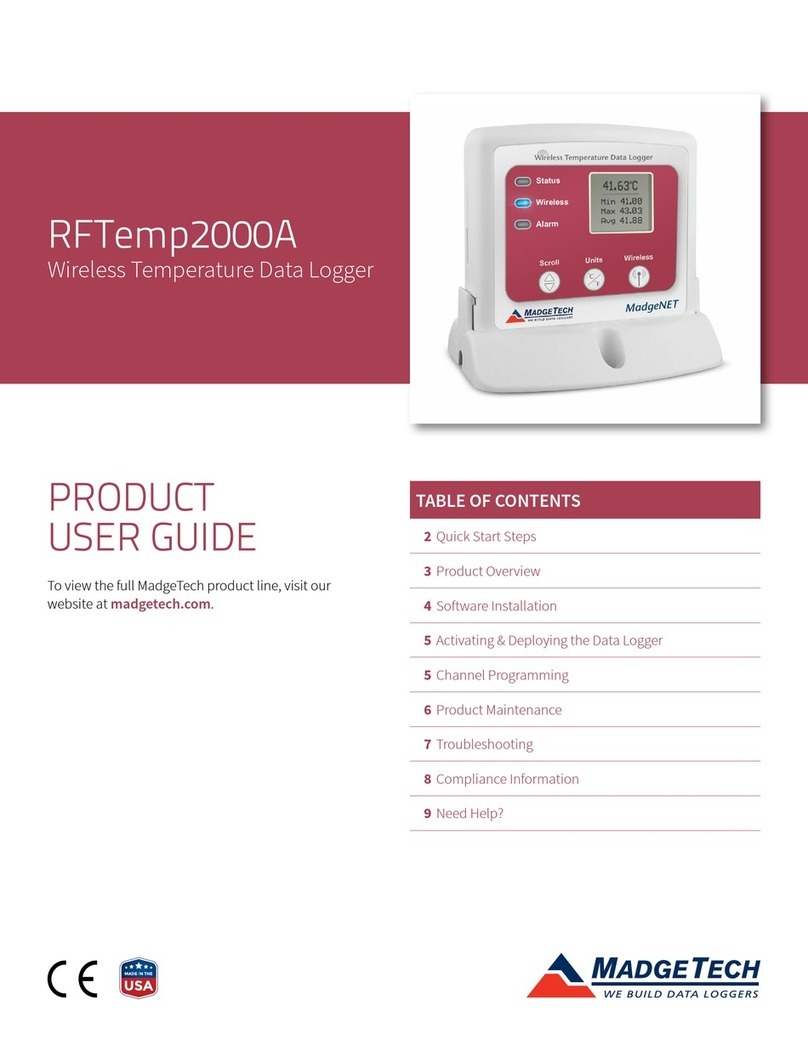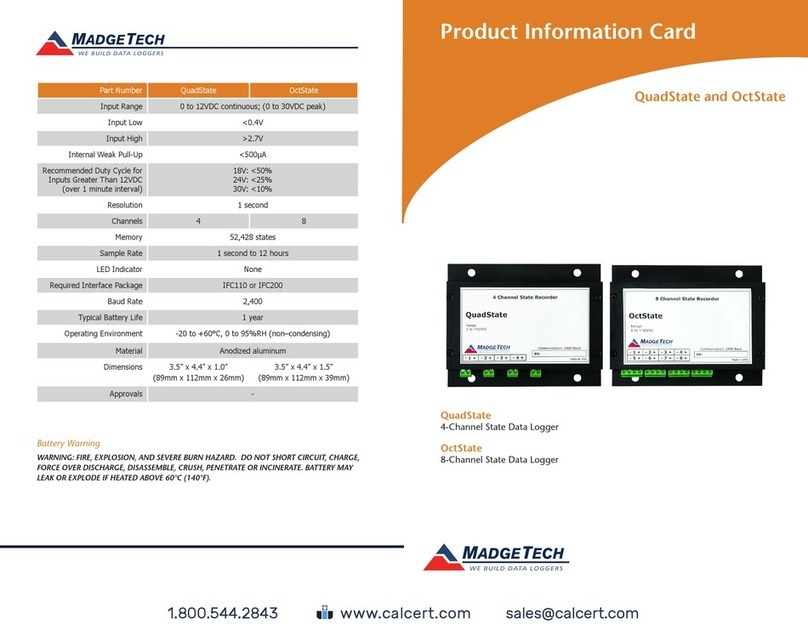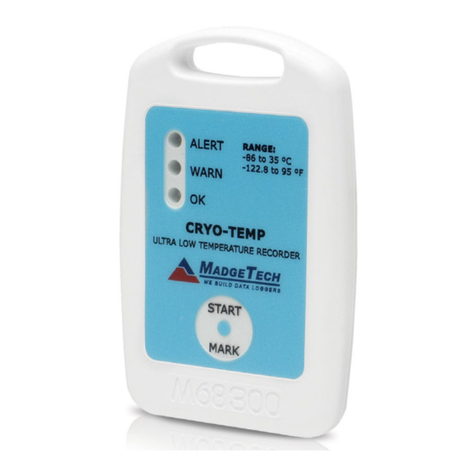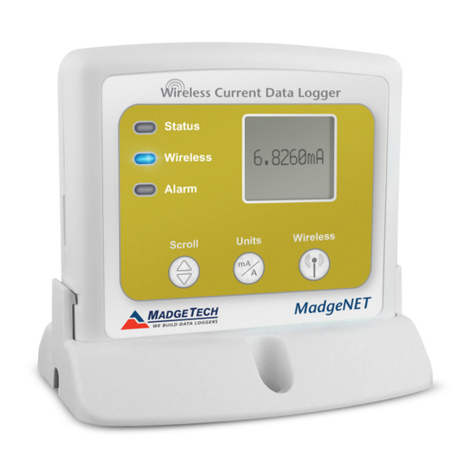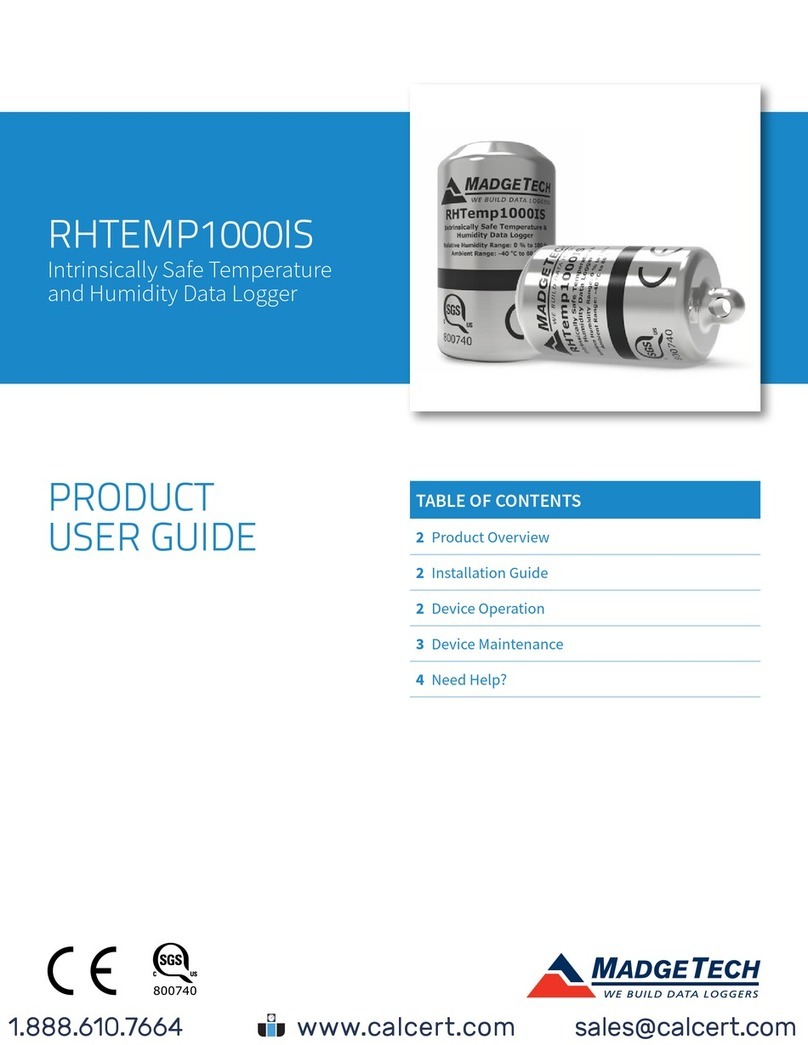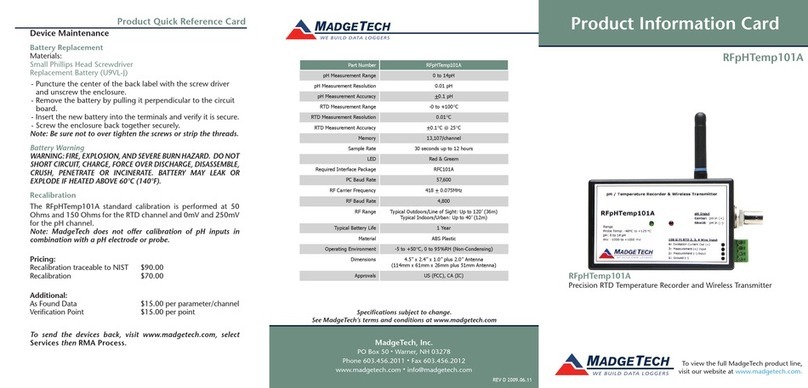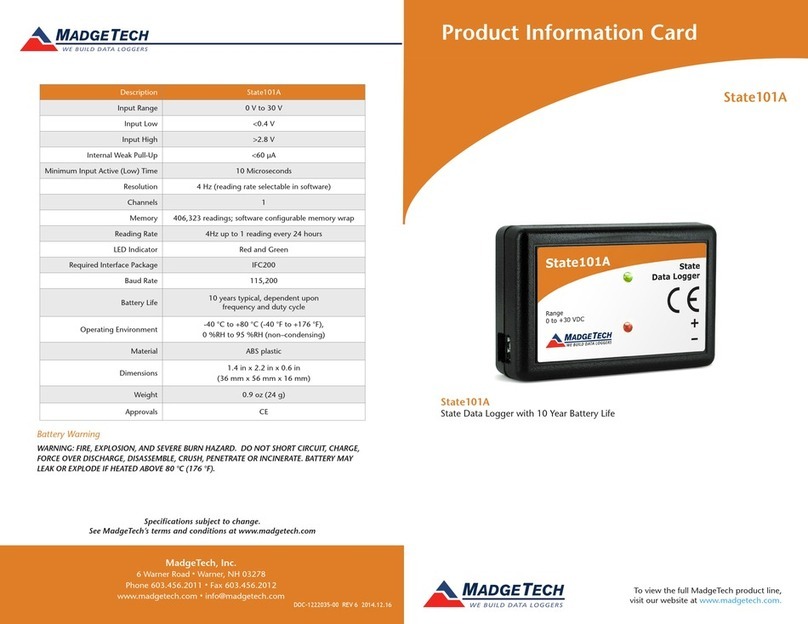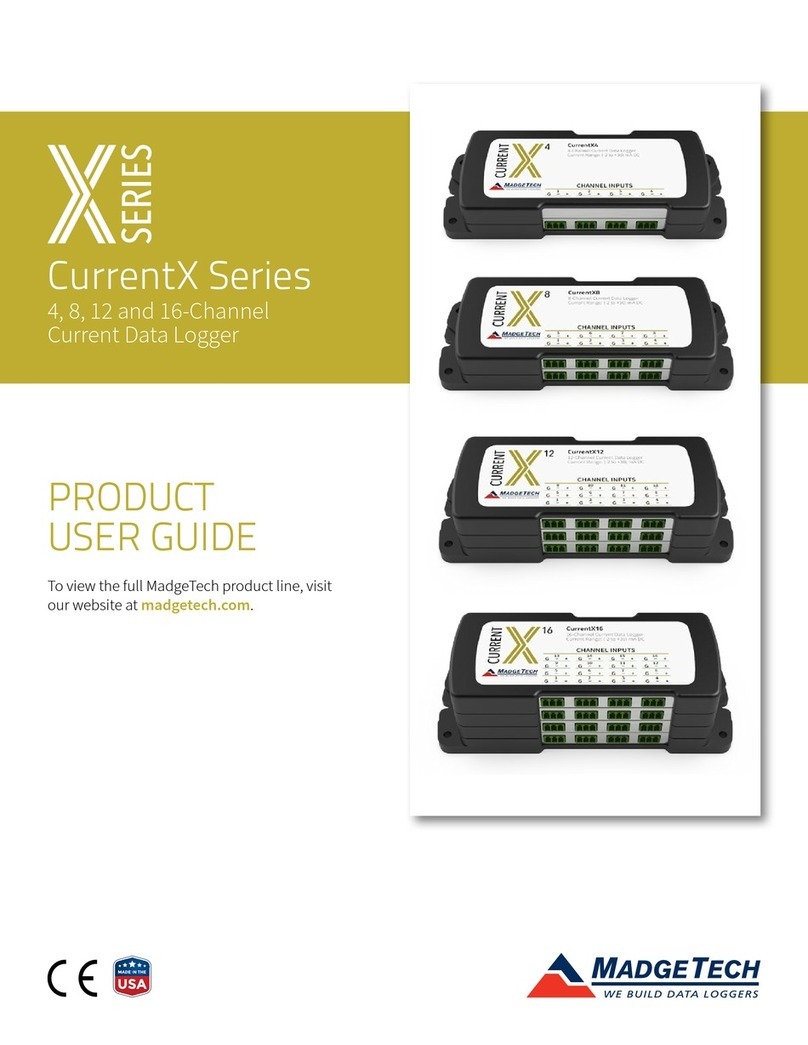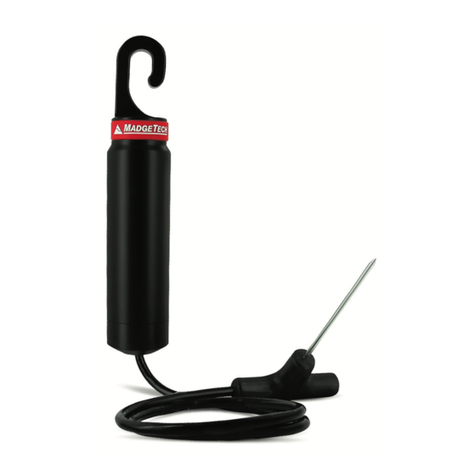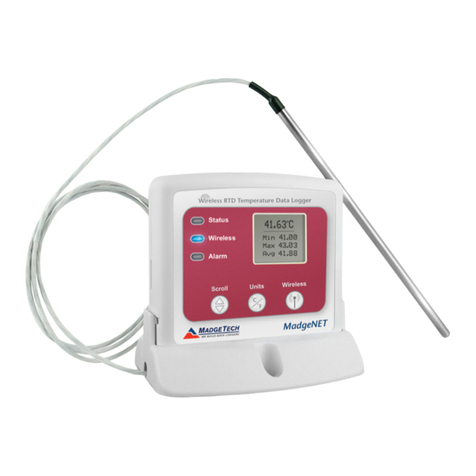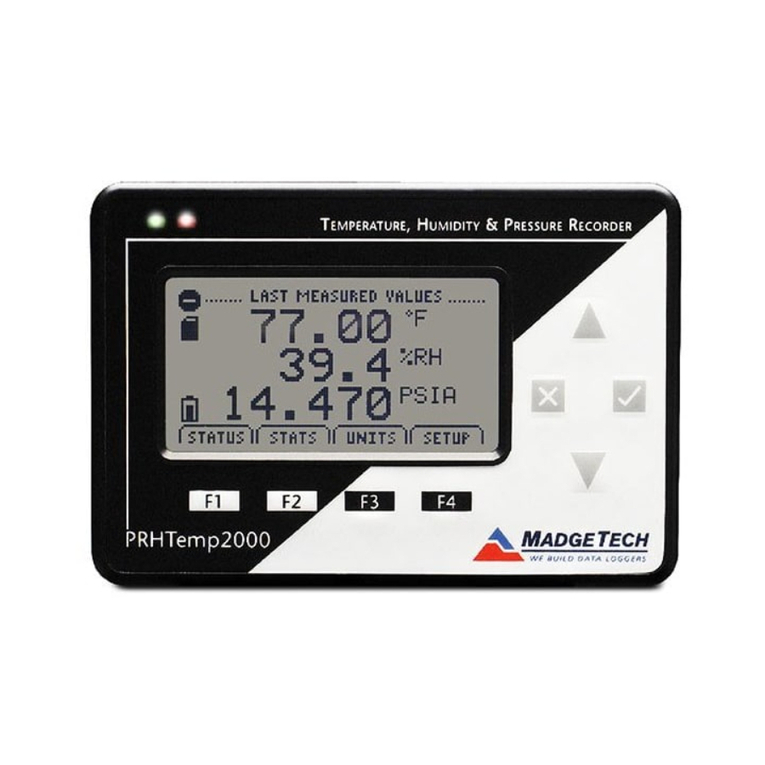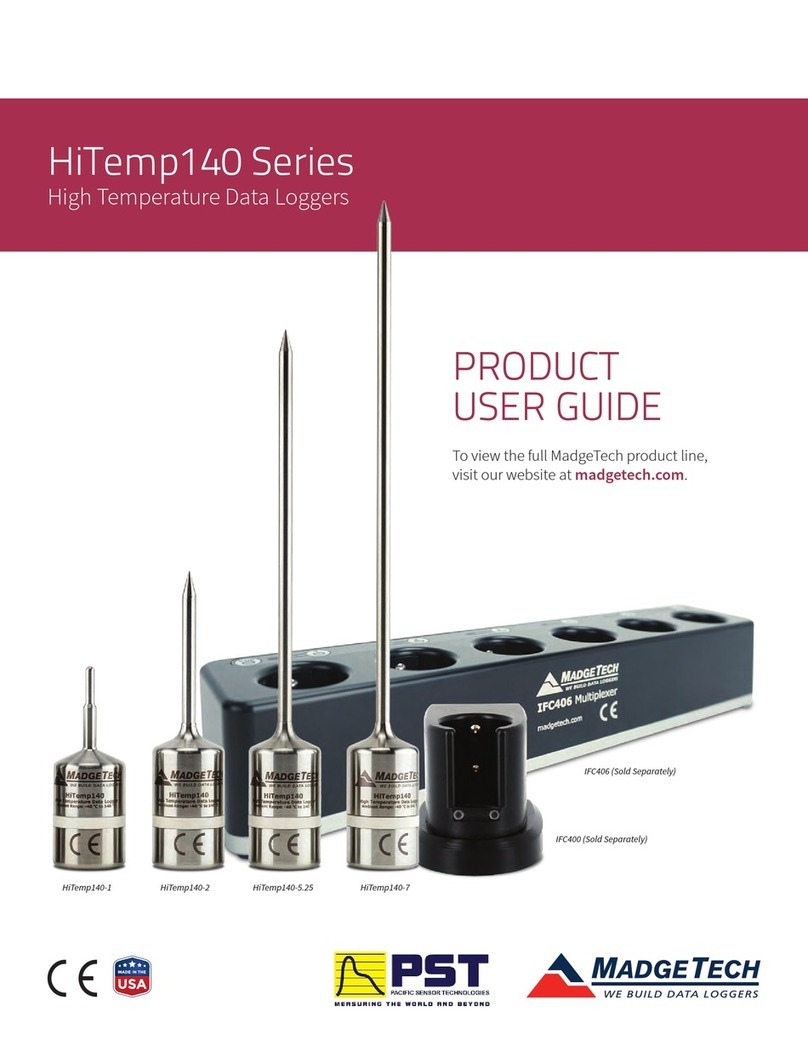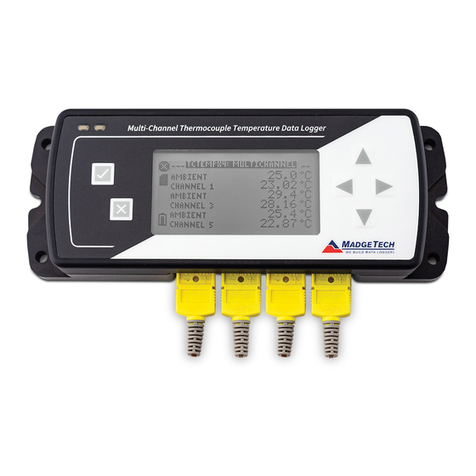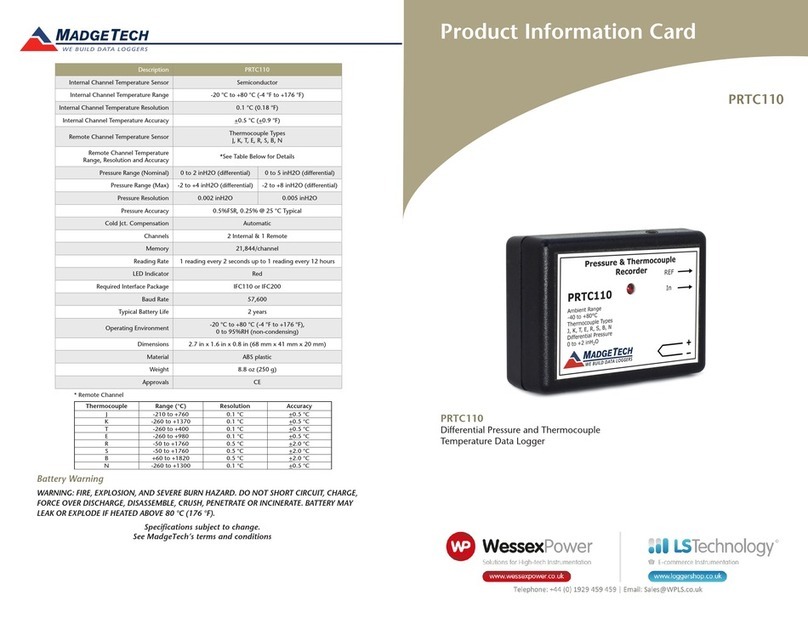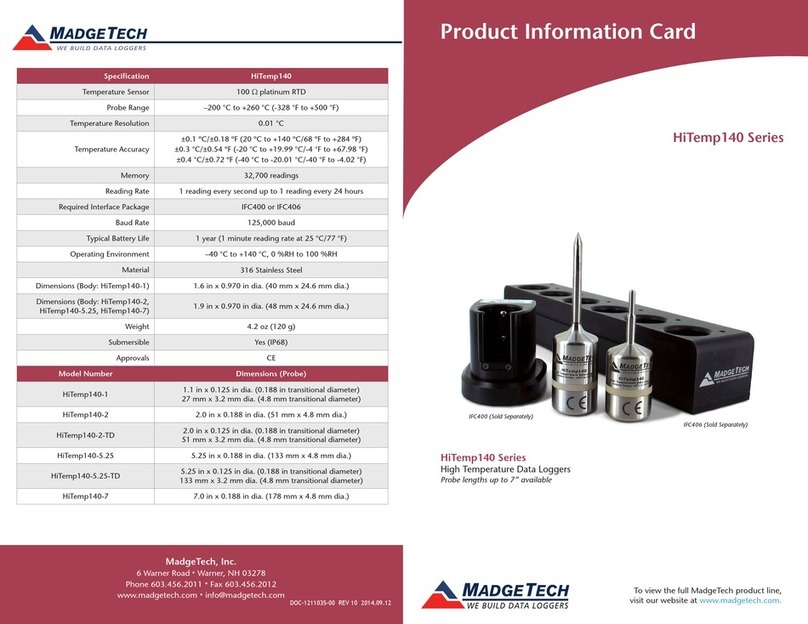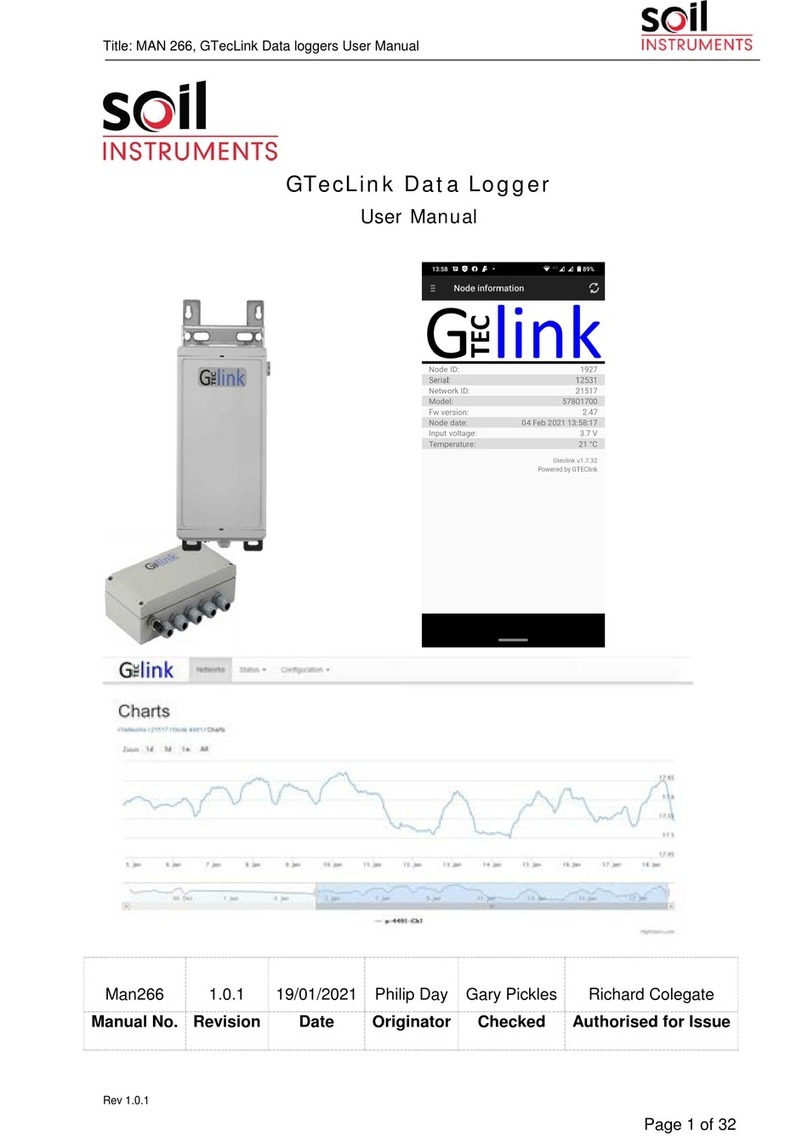
Product Notes
Using the pHTEMP101
1. The pH electrode being used is required to have a BNC output connection. Select a
probe with an output impedance less than 300 megaohms at the desired temperature.
2. The temperature probe must be a 100 Ohm platinum RTD and MadgeTech
recommends using a 4-wire configuration. 2 and 3 wire configurations may work, but
MadgeTech cannot guarantee the accuracy of the probe.
3. Insure that the probe you select can be connected to the pHtemp101 RTD input by
selecting a probe with lead wires.
4. Connect the probes to the data logger.
5. Refer to the description of your pH probe for a calibration procedure.
100 Ohm, 2 or 4 wire RTD probes are recommended for the most accurate performance.
Most 100 Ohm, 3 wire RTD probes will work, but MadgeTech cannot guarantee the
accuracy. To determine whether or not the 3-wire RTD probe will work, the resistance
between the two same colored wires should be less than 1 Ohm. (Note: Please contact the
manufacturer of the RTD probe for questions on the resistance)
LEDs
Once started, the LED will flash at the selected reading rate to indicate that the device is
running.
Installation Guide
Installing the Interface cable
- IFC200
Insert the device into a USB port. The drivers will install automatically.
- IFC110
Plug the serial cable into the port and verify it is secure.
Installing the software
Insert the Software USB Stick in an open USB port. If the autorun does not appear, locate
the drive on the computer and double click on Autorun.exe. Follow the instructions
provided in the Wizard.
Device Operation
Connecting and Starting the data logger
- Once the software is installed and running, plug the interface cable into the data logger.
- Connect the USB end of the interface cable into an open USB port on the computer.
- The device will appear in the Connected Devices list, highlight the desired data logger.
- For most applications, select “Custom Start” from the menu bar and choose the desired
start method, reading rate and other parameters appropriate for the data logging
application and click “Start”. (“Quick Start” applies the most recent custom start options,
“Batch Start” is used for managing multiple loggers at once, “Real Time Start” stores the
dataset as it records while connected to the logger.)
- The status of the device will change to “Running”, “Waiting to Start” or “Waiting to
Manual Start”, depending upon your start method.
- Disconnect the data logger from the interface cable and place it in the environment to
measure.
Note: The device will stop recording data when the end of memory is reached or the device is stopped. At this point the device
cannot be restarted until it has been re-armed by the computer.
Downloading data from a data logger
- Connect the logger to the interface cable.
- Highlight the data logger in the Connected Devices list. Click “Stop” on the menu bar.
- Once the data logger is stopped, with the logger highlighted, click “Download”. You will
be prompted to name your report.
- Downloading will offload and save all the recorded data to the PC.
Device Maintenance
Battery Replacement
Materials:
Small Phillips Head Screwdriver
Replacement Battery (U9VL-J)
- Puncture the center of the back label with the screw driver and unscrew the enclosure.
- Remove the battery by pulling it out of the terminal snaps.
- Snap the new battery into the terminals and verify it is secure.
- Screw the enclosure back together securely.
Note: Be sure not to over tighten the screws or strip the threads.
Recalibration
The pHTemp101 standard calibration is performed at 50 Ohms and 150 Ohms for the RTD
channel and 0mV and 250mV for the pH channel.
.
Product Information Card
pHTemp101
KEY
4- Excitation Current Out (+)
3-Measurement (+) Input
2- Measurement(-) Input
1- Ground (-)
5
10
15
20
25
30
